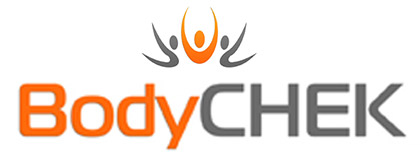You may have seen in the media that Liverpool FC’s Joe Cole and team captain Steven Gerrard have both suffered hamstrings strains recently.
Hamstring strains are common in sports that require sprinting and fast acceleration. Causes of hamstring strains include:
- A lack of affective warm-up
- A tearing of the muscle when sprinting. The hamstring muscles slow down the leg prior to heel-strike and are near full stretch. Effectively, they are contracting and stretching at the same time.
- A weak transversus abdominus muscle, therefore causing the biceps femoris (one of the hamstring muscles) to work harder to stabilize the sacro-iliac joint (a joint connecting the sacrum and pelvis)
- Another theory suggests a lengthened and/or weak gluteus maximus muscle causing the hamstrings to over work to extend the hip (synergistic dominance) therefore weakening the hamstrings over time.
- Synergistic dominance may be caused by a lower-cross syndrome (LXS). A LXS is a postural distortion where the pelvis is anteriorly rotated, which lengthens the gluteals, hamstrings and lower abdominals.
 So what do you do if you have a hamstring strain:
So what do you do if you have a hamstring strain:
- In the first 24 to 48 hours,
- Use Rest, Ice, Compression and Elevation of the affected leg to prevent further damage and optimize healing time.
- Anti-inflammatory protocols (Traumeel, anti-inflammatory foods, Wobenzyme etc)
- For grade 3 tears (complete rupture), surgery may be required
- Once the swelling has gone:
- Sports massage
- Heat treatments could be introduced to aid blood flow and healing to the area.
- The hip and knee should be gently moved into pain-free ranges of motion to recover the full range of motion of the joint and help re-align scar tissue
- Any tight muscles around the pelvis, hip, knee or ankle joints should be gradually and progressively stretched within pain-free ranges. These muscles will differ from person to person.
- Corrective exercise, especially improving muscle balance in the lower limbs and lumbo-pelvic region, leading to gradual return to training (end-stage rehab) and competition to prevent re-injury.
- The following muscles should be strengthened: gluteus maximus, hamstrings, transversus and lower abdominals. Strength training normally begins with isometric, then concentric and finally eccentric work is added.
- Re-training of the Primal Pattern Movements required for the sport.
Recovery times with appropriate recovery management:
- Grade 1 (minor tear) will heal within a few days
- Grade 2 (partial tear) will heal within three to six weeks
- Grade 3 (total rupture) will heal within two to three months
The key to rehabilitation is not just to get an athlete back on the field, but to ensure there is no recurrence of the injury and no other injuries are caused by compensations in movements following a premature return to training (or competition) or poor re-education of movement patterns.
Ultimately, the goal is to prevent injuries in the first place. This requires regular assessments of athletes in order to spot injuries before they happen. Regular assessments are often times challenging with athletes’schedules, travelling and pressure from team coaches to get their star athletes back in action as soon as possible.
Over the years, I have managed to rehabilitate a number of athletes (including hamstrings strains) who have managed to compete at the highest level without injury recurrence and in some cases, gone on to perform better than ever and break personal bests and win championships.
